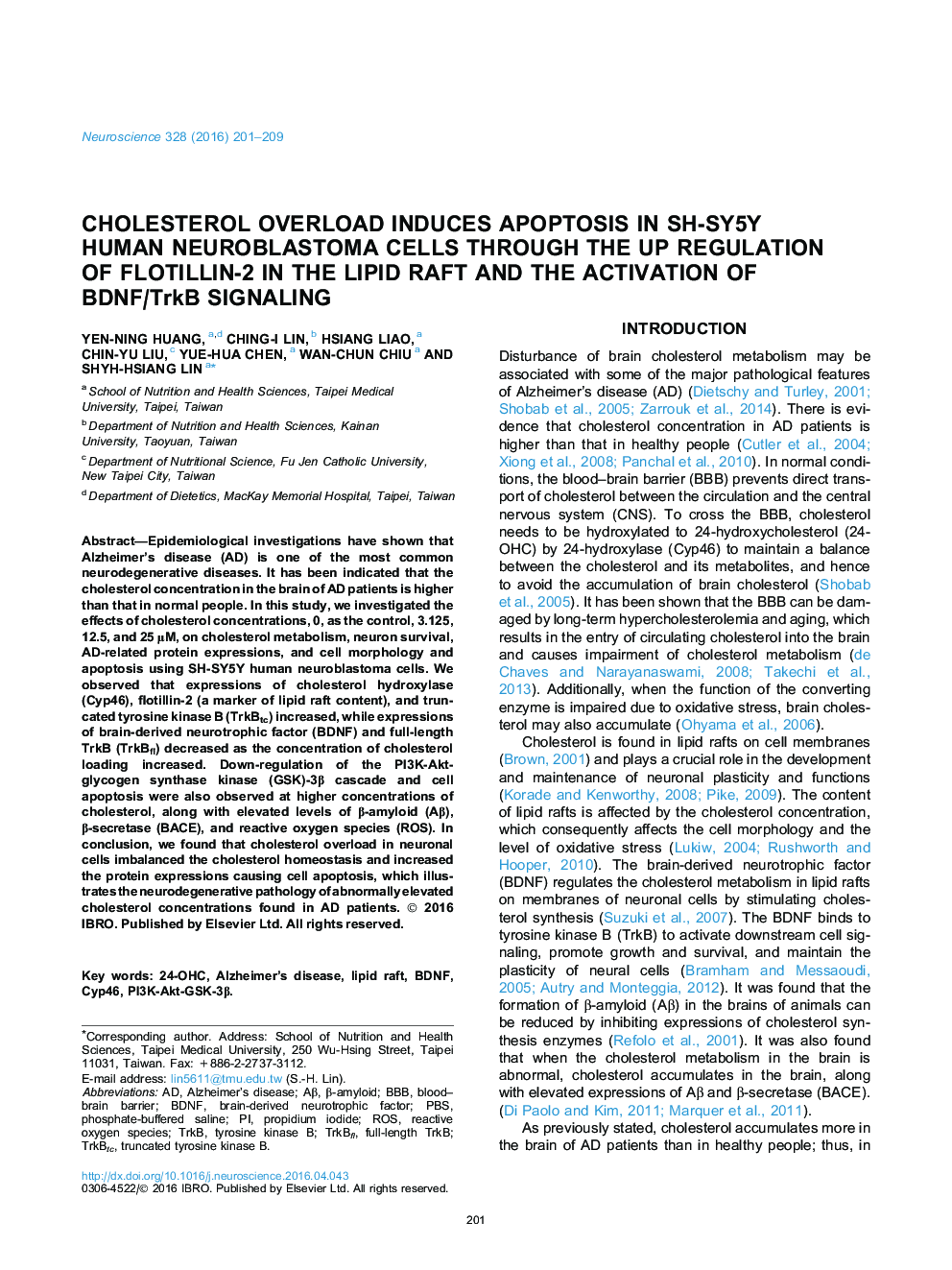| کد مقاله | کد نشریه | سال انتشار | مقاله انگلیسی | نسخه تمام متن |
|---|---|---|---|---|
| 6271131 | 1614748 | 2016 | 9 صفحه PDF | دانلود رایگان |

• Cholesterol turnover rates increased as the treated cholesterol increased in SH-SY5Y cells.
• Down-regulated PI3K-Akt-GSK-3β cascade and cell apoptosis occurred at higher cholesterol loadings.
• Aβ, BACE, and ROS were elevated at higher cholesterol loadings.
• Cholesterol homeostasis was disturbed by the overload of cholesterol.
Epidemiological investigations have shown that Alzheimer’s disease (AD) is one of the most common neurodegenerative diseases. It has been indicated that the cholesterol concentration in the brain of AD patients is higher than that in normal people. In this study, we investigated the effects of cholesterol concentrations, 0, as the control, 3.125, 12.5, and 25 μM, on cholesterol metabolism, neuron survival, AD-related protein expressions, and cell morphology and apoptosis using SH-SY5Y human neuroblastoma cells. We observed that expressions of cholesterol hydroxylase (Cyp46), flotillin-2 (a marker of lipid raft content), and truncated tyrosine kinase B (TrkBtc) increased, while expressions of brain-derived neurotrophic factor (BDNF) and full-length TrkB (TrkBfl) decreased as the concentration of cholesterol loading increased. Down-regulation of the PI3K-Akt-glycogen synthase kinase (GSK)-3β cascade and cell apoptosis were also observed at higher concentrations of cholesterol, along with elevated levels of β-amyloid (Aβ), β-secretase (BACE), and reactive oxygen species (ROS). In conclusion, we found that cholesterol overload in neuronal cells imbalanced the cholesterol homeostasis and increased the protein expressions causing cell apoptosis, which illustrates the neurodegenerative pathology of abnormally elevated cholesterol concentrations found in AD patients.
Journal: Neuroscience - Volume 328, 22 July 2016, Pages 201–209